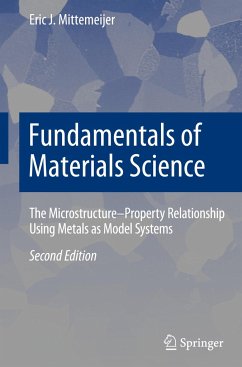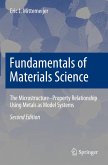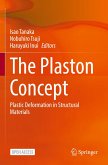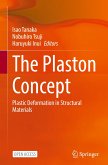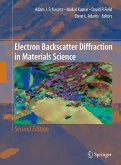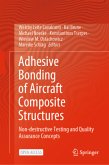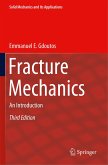This textbook offers a strong introduction to the fundamental concepts of materials science. It conveys the quintessence of this interdisciplinary field, distinguishing it from merely solid-state physics and solid-state chemistry, using metals as model systems to elucidate the relation between microstructure and materials properties.
Mittemeijer's Fundamentals of Materials Science provides a consistent treatment of the subject matter with a special focus on the microstructure-property relationship. Richly illustrated and thoroughly referenced, it is the ideal adoption for an entire undergraduate, and even graduate, course of study in materials science and engineering. It delivers a solid background against which more specialized texts can be studied, covering the necessary breadth of key topics such as crystallography, structure defects, phase equilibria and transformations, diffusion and kinetics, and mechanical properties. The success of the first edition has led to this updated and extended second edition, featuring detailed discussion of electron microscopy, supermicroscopy and diffraction methods, an extended treatment of diffusion in solids, and a separate chapter on phase transformation kinetics.
"In a lucid and masterly manner, the ways in which the microstructure can affect a host of basic phenomena in metals are described.... By consistently staying with the postulated topic of the microstructure - property relationship, this book occupies a singular position within the broad spectrum of comparable materials science literature .... it will also be of permanent value as a reference book for background refreshing, not least because of its unique annotated intermezzi; an ambitious, remarkable work."
G. Petzow in International Journal of Materials Research.
"The biggest strength of the book is the discussion of the structure-property relationships, which the author has accomplished admirably.... In a nutshell, the book should not be looked at as a quick 'cook book' type text, but as a serious, critical treatise for some significant time to come."
G.S. Upadhyaya in Science of Sintering.
"The role of lattice defects in deformation processes is clearly illustrated using excellent diagrams . Included are many footnotes, 'Intermezzos', 'Epilogues' and asides within the text from the author's experience. This ..... soon becomes valued for the interesting insights into the subject and shows the human side of its history. Overall this book provides a refreshing treatment of this important subject and should prove a useful addition to the existing text books available to undergraduate and graduate students and researchers in the field of materials science."
M. Davies in Materials World.
Mittemeijer's Fundamentals of Materials Science provides a consistent treatment of the subject matter with a special focus on the microstructure-property relationship. Richly illustrated and thoroughly referenced, it is the ideal adoption for an entire undergraduate, and even graduate, course of study in materials science and engineering. It delivers a solid background against which more specialized texts can be studied, covering the necessary breadth of key topics such as crystallography, structure defects, phase equilibria and transformations, diffusion and kinetics, and mechanical properties. The success of the first edition has led to this updated and extended second edition, featuring detailed discussion of electron microscopy, supermicroscopy and diffraction methods, an extended treatment of diffusion in solids, and a separate chapter on phase transformation kinetics.
"In a lucid and masterly manner, the ways in which the microstructure can affect a host of basic phenomena in metals are described.... By consistently staying with the postulated topic of the microstructure - property relationship, this book occupies a singular position within the broad spectrum of comparable materials science literature .... it will also be of permanent value as a reference book for background refreshing, not least because of its unique annotated intermezzi; an ambitious, remarkable work."
G. Petzow in International Journal of Materials Research.
"The biggest strength of the book is the discussion of the structure-property relationships, which the author has accomplished admirably.... In a nutshell, the book should not be looked at as a quick 'cook book' type text, but as a serious, critical treatise for some significant time to come."
G.S. Upadhyaya in Science of Sintering.
"The role of lattice defects in deformation processes is clearly illustrated using excellent diagrams . Included are many footnotes, 'Intermezzos', 'Epilogues' and asides within the text from the author's experience. This ..... soon becomes valued for the interesting insights into the subject and shows the human side of its history. Overall this book provides a refreshing treatment of this important subject and should prove a useful addition to the existing text books available to undergraduate and graduate students and researchers in the field of materials science."
M. Davies in Materials World.
"This is a quite comprehensive book with over 700 pages and excellent integration of figures, tables, and equations. ... They provide great insights into the relationships between structure and properties that are fundamental to all materials scientists. ... the book finds an excellent balance between theory and practical application. ... Overall, Fundamentals of Materials Science: The Microstructure-Property Relationship Using Metals as Model Systems (Second Edition) by Eric J. Mittemeijer is an invaluable contribution to materials science." (David P. Cann, Journal of Materials Science, Vol. 57, 2022)

